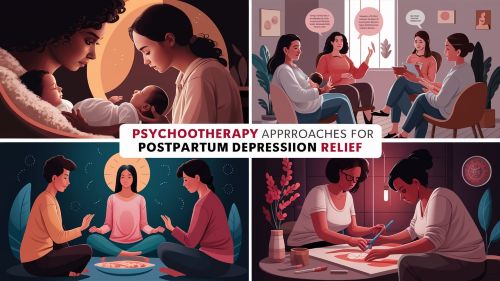The postpartum period can feel like being handed the controls to a complex aircraft with no user manual. You’re exhausted, hormonal, and suddenly responsible for a precious new life. When postpartum depression (PPD) or anxiety enters the cockpit, it can feel like the entire system is spiraling, and a relentless voice on the intercom is telling you you’re doing it all wrong.
What if someone could hand you that user manual? What if you could learn a set of practical, proven skills to recalibrate the controls, quiet that critical voice, and navigate your way back to clear skies?
That is the core promise of Cognitive Behavioral Therapy (CBT). More than just “talk therapy,” CBT is a structured, evidence-based approach that acts as a powerful toolkit for your mind. It’s one of the most effective treatments for postpartum mood and anxiety disorders, and its benefits extend far beyond the immediate crisis.
Let’s explore the seven life-changing benefits of CBT and understand why it’s a cornerstone of modern postpartum mental health care.
Benefit #1: It’s Practical, Action-Oriented, and Goal-Focused
Unlike therapies that may focus extensively on your past, CBT is firmly rooted in the “here and now.” It addresses the immediate, painful problems you’re facing today.
Instead of asking “Why am I like this?”, CBT asks, “What is happening right now, and what small, practical step can we take to make it better?”
- It’s a Workshop, Not a Confessional: A CBT therapist acts like a coach or a personal trainer for your mind. Sessions are structured, with a clear agenda and goals. You won’t be left wondering, “What are we even doing here?”
- You Get “Homework”: This isn’t like school. CBT homework involves practicing the skills you learn in session—like tracking your thoughts or scheduling a 5-minute walk. This active participation means you are constantly building your recovery muscles between sessions.
This practical, hands-on approach is incredibly grounding for a new mom who feels like her world is spinning out of control. It provides structure in the midst of chaos.
Benefit #2: It Directly Tackles the Engine of PPD: Negative Thoughts
PPD isn’t just a feeling of sadness; it’s a cognitive storm. It hijacks your thought patterns, creating a constant, automatic loop of negativity. CBT goes straight to the source.
The core idea is that our thoughts, feelings, and behaviors are all connected.
[Insert a simple, clear infographic of the CBT Triangle here. It should have “THOUGHTS” at the top, “FEELINGS” at one bottom point, and “BEHAVIORS” at the other, with arrows flowing between them.]
CBT teaches you how to dismantle this cycle by identifying and challenging the “Automatic Negative Thoughts” (ANTs) that fuel your depression.
The Most Empowering Realization from CBT:
Your thoughts are not facts. They are mental events. The thought “I am a bad mother” is a symptom of a medical illness, not an objective truth about your character. CBT gives you the tools to prove this to yourself.
You’ll learn to spot common cognitive distortions, or “thinking traps,” that are hallmarks of PPD:
| Thinking Trap | Your PPD Brain Says… |
|---|---|
| All-or-Nothing Thinking | “I had to give the baby a bottle of formula. I have completely failed at breastfeeding.” |
| Mind Reading | “My friend cancelled our coffee date. She must think I’m too much of a mess to be around.” |
| Catastrophizing | “The baby has a stuffy nose. It’s probably a serious illness. I need to go to the ER.” |
| Emotional Reasoning | “I feel so guilty, so I must have done something wrong.” |
By learning to identify and reframe these thoughts, you cut off the fuel supply to your depression.
Benefit #3: It Fights the Paralysis and Inertia of Depression
One of the cruelest symptoms of PPD is a profound lack of energy and motivation. You know you “should” go for a walk or take a shower, but you feel physically and emotionally paralyzed.

The “Behavioral” part of CBT directly attacks this inertia through a technique called Behavioral Activation.
The principle is simple but powerful: Action precedes motivation.
You don’t wait until you feel like doing something. You do the thing—no matter how small—to create the feeling of accomplishment, which then generates motivation.
A CBT therapist will help you schedule tiny, manageable activities. The goal is to start so small that you can’t fail.
- Instead of “Clean the house,” the goal is “Put one dish in the dishwasher.”
- Instead of “Connect with my baby,” the goal is “Sing one verse of ‘Twinkle, Twinkle, Little Star’ to them.”
Each tiny action serves as powerful evidence against the depressive thought “I can’t do anything.” It builds an upward spiral, breaking the cycle of withdrawal and despair.
A Glimpse of CBT in Action: Maya’s Moment
Maya, 8 weeks postpartum, accidentally knocks over a freshly pumped bottle of breast milk.
Old Spiral (Pre-CBT):
- Thought: “I ruin everything. I can’t even do this one simple thing right. All that work for nothing.” (Catastrophizing, All-or-Nothing Thinking)
- Feeling: A gut-punch of shame, frustration, and hopelessness.
- Behavior: She bursts into tears, leaves the mess on the floor, and goes to her room, convinced she is a failure.
New Path (With CBT Skills):
- Thought: Maya notices the ANT: “I ruin everything.”
- Challenge (The CBT Skill): She pauses and asks herself: “Is it true I ruin everything? Or did I just have an accident because I’m exhausted? Is there a more compassionate way to see this?” She reframes: “This is incredibly frustrating, and it’s okay to be upset. But accidents happen, especially when you’re sleep-deprived. This doesn’t define my worth as a mother.”
- Behavior: She takes three deep breaths (a distress tolerance skill). She cleans up the spill and decides to do a small, positive action: she snuggles her baby skin-to-skin for five minutes.
In this moment, CBT didn’t magically bring the milk back. But it stopped the emotional spiral and allowed Maya to respond to a setback with resilience instead of despair.
Benefit #4: It’s Fast-Acting and Time-Limited
When you are suffering, the idea of endless, years-long therapy can feel daunting. CBT is different. It is designed to be a short-term intervention.
A typical course of CBT for PPD is 12 to 20 weekly sessions. Many women begin to feel significant improvement within the first month as they start implementing the skills. Knowing there is a light at the end of the tunnel—and that the tunnel isn’t miles long—can be incredibly motivating.
Benefit #5: It Equips You with Lifelong Skills for Relapse Prevention
This might be the most valuable long-term benefit of CBT. You aren’t just treating the current depressive episode; you are building a mental health “immune system” for the future.
The skills you learn—challenging negative thoughts, regulating emotions, taking positive action even when you don’t feel like it—don’t disappear when therapy ends. They are yours forever.
This is crucial because having one episode of PPD can increase your risk for future depressive episodes. With CBT, you are armed with:
- Early Warning Detection: You know your personal red flags and can intervene early.
- A Proven Toolkit: You have a set of strategies you know how to use if you feel yourself starting to slip.
- Resilience: You have a fundamental belief, built on experience, that you can handle difficult thoughts and feelings.
Benefit #6: It’s an Evidence-Based, “Gold Standard” Treatment
In a world full of wellness fads, CBT stands on a mountain of scientific evidence. It is recognized by major health organizations, including the American Psychological Association (APA), as a first-line, “gold standard” treatment for depression and anxiety.
This means you can invest your precious time, energy, and money with confidence, knowing that this is a proven path to recovery. For moderate to severe PPD, CBT is also highly effective when used in combination with medication, creating a powerful two-pronged approach to healing.
Benefit #7: It Empowers YOU
Perhaps the most profound benefit of CBT is the shift in perspective it creates. PPD makes you feel like a passive victim of your own brain. It dictates your mood, your energy, and your self-worth.
CBT puts you back in the driver’s seat.
It operates on the belief that you are the expert on your own life. The therapist is a guide who provides the tools, but you are the one who learns to use them. You are the one who challenges the thoughts. You are the one who takes the small steps.
This process of active participation builds a deep and lasting sense of self-efficacy and agency. You learn that you are not broken. You are capable, resilient, and have the power to influence your own mental well-being. This feeling is the exact opposite of the helplessness that defines depression.

Frequently Asked Questions (FAQ)
Q1: Will CBT feel like being in school?
It can be educational, but a good therapist ensures it’s also deeply compassionate and personalized. It’s a collaborative process, not a lecture. The structure is there to support you, not to judge you.
Q2: Can I do CBT on my own with a workbook or app?
Self-help CBT resources can be a great starting point and a helpful supplement. However, the guidance, accountability, and therapeutic relationship provided by a trained therapist are invaluable, especially when dealing with the complexities of PPD. A therapist can tailor the approach specifically to you.
Q3: What if I’m too tired to do the “homework”?
This is a common and valid concern. A good perinatal CBT therapist understands the realities of new motherhood. They will help you set goals that are realistic for you. The goal is progress, not perfection. Even a tiny bit of practice is a huge win.
More Than a Treatment, It’s a Transformation
CBT offers more than just relief from the symptoms of postpartum depression. It offers a new way of relating to your own mind. It provides a practical, hopeful, and empowering path forward, transforming you from a passive sufferer into the active author of your own recovery story.
It’s a gift you give yourself that continues to pay dividends long after the fog of PPD has lifted, leaving you stronger, more resilient, and better equipped for the beautiful, messy journey of motherhood.
Disclaimer: This article provides general information and is not a substitute for professional medical advice. A diagnosis and treatment plan for PPD should be made with a qualified healthcare or mental health professional.
